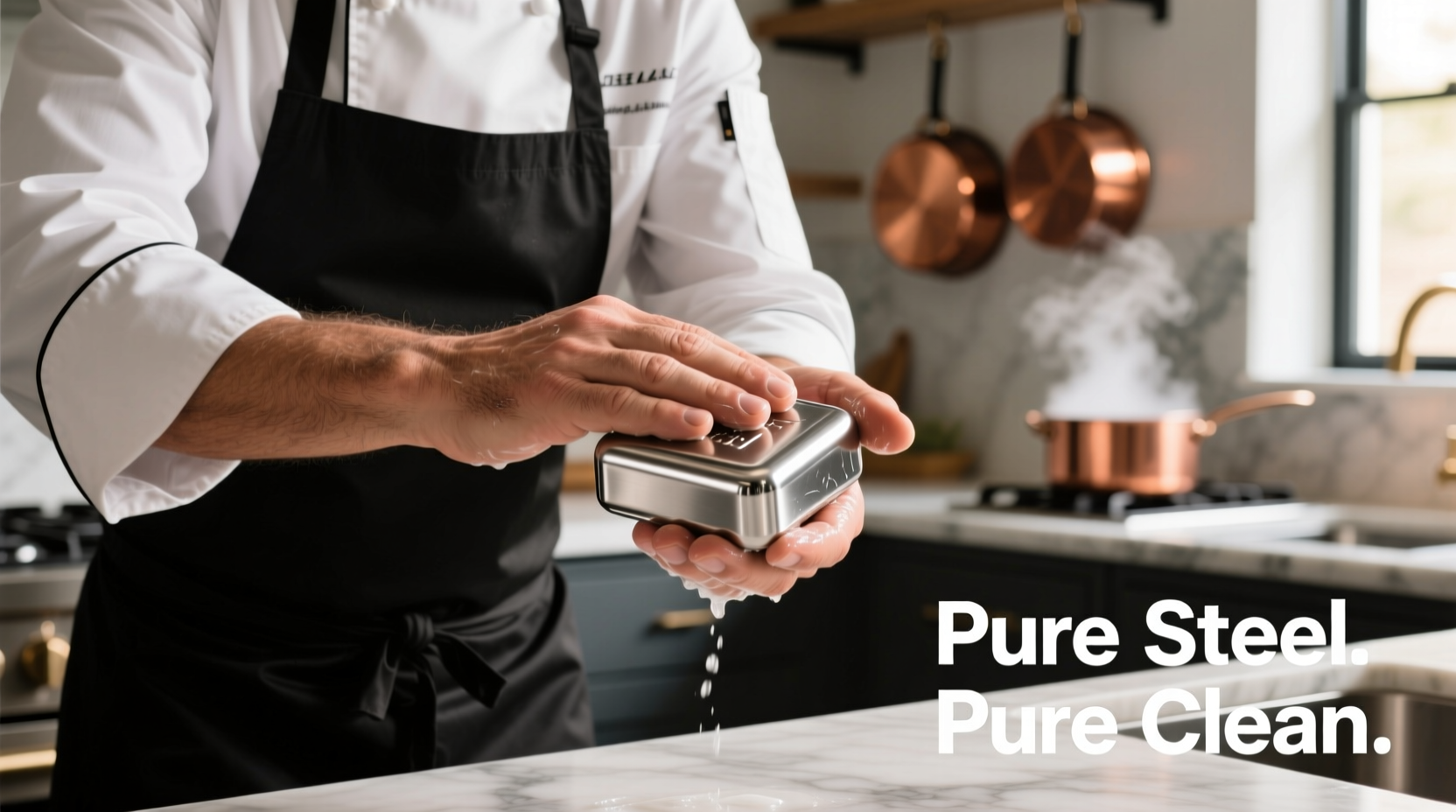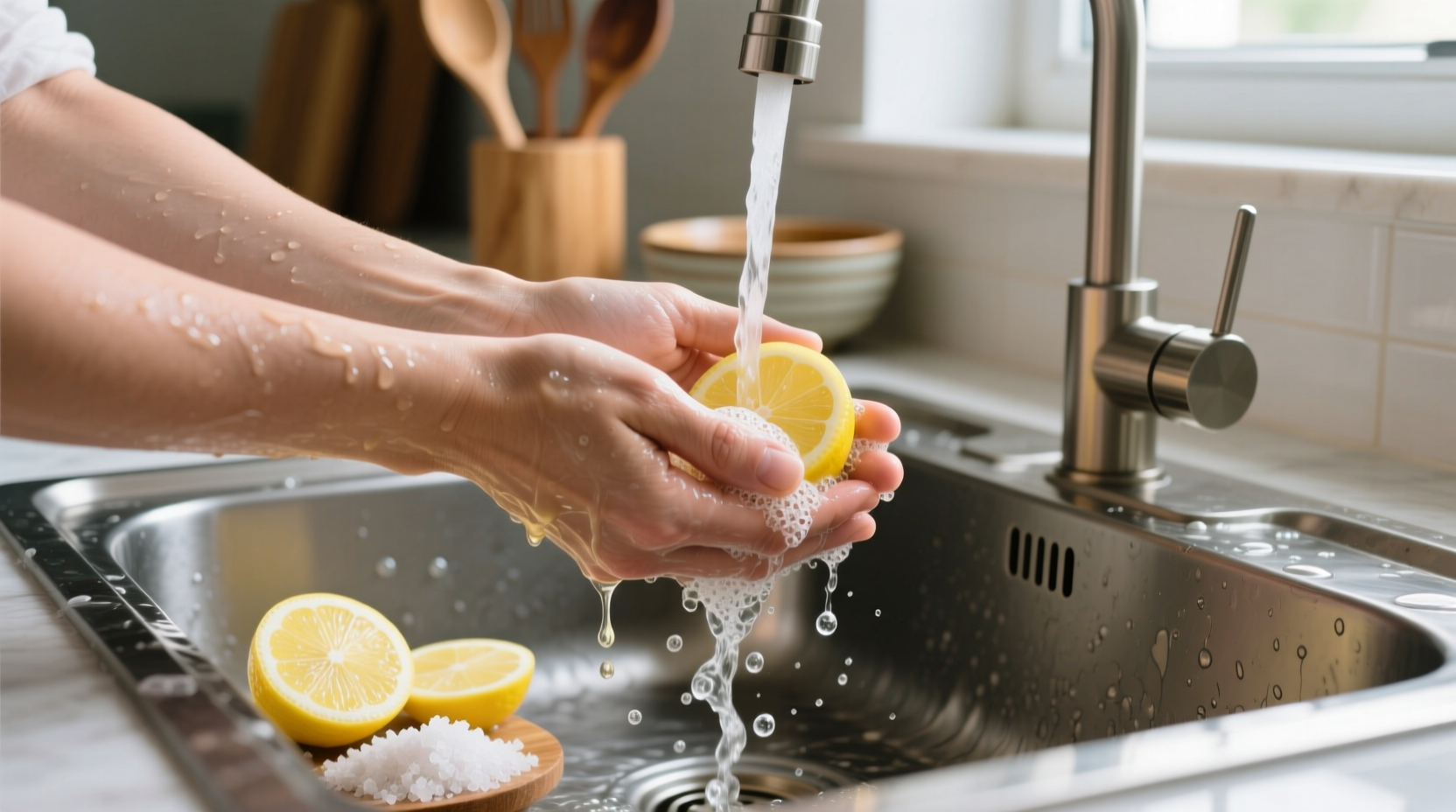Rub your hands with a stainless steel object under cold running water for 30 seconds, then wash thoroughly with soap. This chemical reaction neutralizes sulfur compounds causing the odor, providing immediate relief from stubborn garlic smell on hands.
Why Garlic Smell Lingers on Your Skin (And How to Beat It)
Ever chop garlic for dinner only to have that pungent odor cling to your hands for hours? You're not alone. Garlic's distinctive smell comes from sulfur compounds like allicin that bind strongly to skin proteins. These compounds resist regular washing because they form chemical bonds with your skin's amino acids. According to research from the American Chemical Society, these sulfur molecules are particularly stubborn because they're both hydrophobic and reactive. But here's the good news: with the right approach, you can eliminate garlic odor in under a minute using items already in your kitchen. Let's explore the most effective solutions based on chemistry and professional chef techniques.The Immediate Action Protocol: What to Do Right Now
When garlic smell first hits your hands, your response timing matters. The first 60 seconds are critical before the sulfur compounds fully bind to your skin. Follow this sequence:- Rinse with cold water - Hot water opens pores, allowing deeper absorption
- Rub with stainless steel - Use your sink faucet, a spoon, or special soap bar
- Scrub with soap - Focus on cuticles and between fingers
- Rinse again with cold water

Top 5 Methods Ranked by Effectiveness
| Method | Effectiveness | Time Required | Best For |
|---|---|---|---|
| Stainless steel + cold water | ★★★★★ | 30-60 seconds | Immediate odor removal |
| Baking soda paste | ★★★★☆ | 2-3 minutes | When steel isn't available |
| Lemon juice wash | ★★★☆☆ | 1-2 minutes | Fragrance masking |
| Soap + salt scrub | ★★★☆☆ | 1-2 minutes | Routine kitchen cleanup |
| Commercial odor removers | ★★★☆☆ | 30-60 seconds | Professional kitchens |
When to Use Which Method: Context Matters
Your kitchen situation determines the best approach for removing garlic smell from hands:- Emergency cleanup before guests arrive: Reach for your stainless steel faucet. Professional chefs keep a dedicated "odor-removing" steel bar near their prep stations.
- No steel available? Make a paste of baking soda and water (3:1 ratio). The mild abrasiveness lifts odor molecules while neutralizing pH.
- Sensitive skin concern: Skip salt scrubs which can cause micro-tears. Use lemon juice diluted with equal parts water to avoid irritation.
- Odor has already set in: Try the "double wash" technique - first with steel, then with soap containing activated charcoal.
Prevention Strategies That Actually Work
The best way to handle garlic smell is to prevent it from transferring to your skin in the first place:- Use the right cutting technique: Crush garlic with the flat side of your knife before mincing. This releases enzymes that reduce volatile compounds.
- Wear nitrile gloves (not latex) when handling large quantities. Latex traps moisture, making odor transfer worse.
- Prepare garlic in a food processor with a small amount of oil - the oil binds to sulfur compounds before they reach your skin.
- Keep a stainless steel "soap" bar by your sink. These specialized bars contain higher iron content for maximum odor neutralization.
Common Mistakes That Make Garlic Smell Worse
Many home cooks accidentally intensify the problem with these well-intentioned but misguided approaches:- Using hot water - Opens pores and allows deeper absorption of sulfur compounds
- Rubbing with bare hands - Spreads oils across more skin surface area
- Applying hand sanitizer - Alcohol sets the odor by denaturing skin proteins
- Waiting too long - After 5 minutes, odor becomes significantly harder to remove
When Home Remedies Fail: Professional Solutions
For persistent garlic odor that resists standard methods, try these chef-recommended approaches:- The vinegar soak: Mix equal parts white vinegar and water, soak hands for 2 minutes, then rinse
- Coffee grounds exfoliation: The porous structure absorbs odor molecules while gently exfoliating
- Activated charcoal paste: Mix with water to form a paste, apply for 3 minutes before rinsing
Understanding the Timeline of Garlic Odor
| Time After Exposure | Odor Intensity | Best Removal Method |
|---|---|---|
| 0-60 seconds | Moderate | Stainless steel + cold water |
| 1-5 minutes | Increasing | Baking soda paste |
| 5-15 minutes | Peak intensity | Vinegar soak + soap |
| 15+ minutes | Persistent | Activated charcoal treatment |
FAQ: Your Garlic Smell Questions Answered
Does stainless steel really remove garlic smell?
Yes, stainless steel effectively removes garlic odor through a chemical reaction. The iron in steel binds with sulfur compounds from garlic, neutralizing the odor molecules. Use cold water while rubbing your hands on a stainless steel object for 30 seconds for best results. This method works because sulfur has a stronger affinity for iron than skin proteins.
Why does garlic smell linger longer than other food odors?
Garlic contains sulfur compounds like allicin that form strong chemical bonds with skin proteins. These compounds are both hydrophobic and reactive, allowing them to penetrate skin layers and resist regular washing. Unlike onion or fish odors, garlic's molecular structure makes it particularly stubborn and long-lasting on skin surfaces.
Can I prevent garlic smell before it happens?
Yes, prevention is possible. Wear nitrile gloves when handling garlic, use a food processor with oil to contain volatile compounds, or crush garlic with a knife before mincing to reduce enzyme activity. Professional chefs also recommend washing hands with oil first (like olive oil), which creates a barrier that prevents sulfur compounds from binding to skin.
Why does hot water make garlic smell worse?
Hot water opens skin pores and increases blood flow to the surface, allowing garlic's sulfur compounds to penetrate deeper into skin layers. This makes the odor more persistent and difficult to remove. Always use cold water when treating garlic smell, as it constricts pores and prevents deeper absorption of odor molecules.
How long does garlic smell typically last on hands?
Without treatment, garlic smell can persist for 4-8 hours as sulfur compounds gradually break down. With proper treatment using stainless steel and cold water, most odor disappears within 60 seconds. Residual traces may remain for 1-2 hours but become undetectable to others. The duration depends on skin type, garlic variety, and whether immediate action was taken.











 浙公网安备
33010002000092号
浙公网安备
33010002000092号 浙B2-20120091-4
浙B2-20120091-4